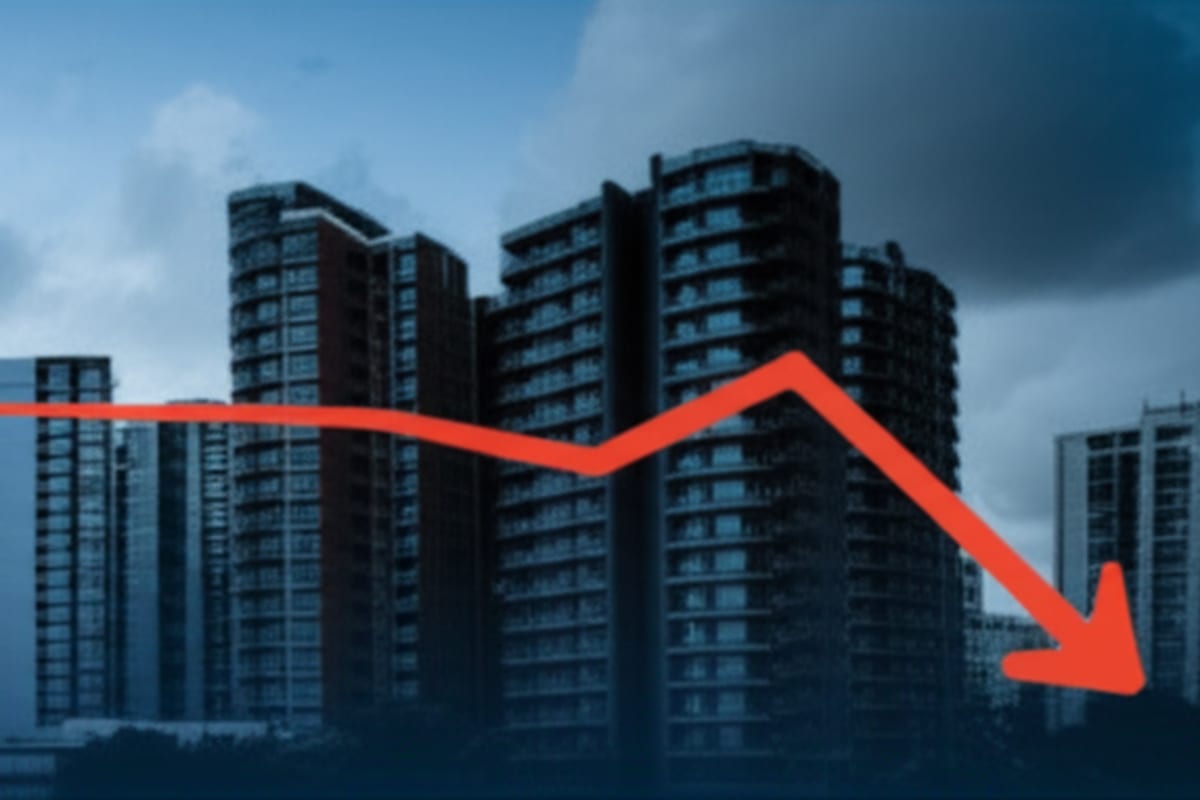Australia's 5% Home Scheme: Millions Face Repayment Crisis, Experts Warn

Australia's Homeownership Dream Under Strain: Scrutinizing the 5% Deposit Scheme's Impact
Background
This scheme, officially known as the First Home Loan Deposit Scheme (FHLDS), allows eligible first home buyers to purchase a home with a deposit as low as 5%, with the government guaranteeing the remaining portion of the traditional 20% deposit
Data compiled by the Parliamentary Library, commissioned by the Greens, indicates that a significant majority of the 3.
8 million Australians employed in the nation's 10 most common professions would struggle to afford mortgage repayments on a median-priced Australian home without experiencing housing stress
This alarming finding casts a critical shadow over policies that aim to reduce the upfront barrier to homeownership without addressing the fundamental issue of long-term affordability
Experts and the Greens party argue that such demand-side interventions, which empower buyers to spend more without a corresponding increase in housing supply, primarily serve to inflate property prices further, ultimately failing to lift the overall proportion of homeowners
They contend that the scheme, while appearing beneficial on the surface, ultimately exacerbates the affordability crisis
The Promise and Peril of Lower Deposits
By requiring a smaller upfront payment, the scheme reduces the immediate financial hurdle, offering a pathway into the market that might otherwise be out of reach for many aspiring homeowners
Participating lenders are part of a panel, and the scheme is subject to specific eligibility criteria
While this approach addresses the entry cost, the core problem, as highlighted by the recent analysis, lies in the ongoing cost of ownership – specifically, the capacity to service mortgage repayments
In an economic climate characterized by persistent inflation, rising interest rates, and, until recently, stagnant real wage growth, the ability of households to manage large mortgage debts is severely tested
For many, a smaller deposit translates directly to a larger loan principal, resulting in higher monthly repayments and increased financial vulnerability
The Parliamentary Library's data underscores this vulnerability, suggesting that for a significant portion of the workforce, even with a reduced deposit, the financial strain of servicing a median-priced home loan would consume an unsustainable proportion of their income
Housing stress is typically defined as a household spending more than 30% of its gross income on housing costs
However, some experts argue that this threshold is becoming increasingly unrealistic, particularly in major metropolitan areas
For millions of Australians, this threshold would be breached, leading to reduced disposable income, limited savings, and increased financial precariousness
This not only impacts individual households but also has broader economic ramifications, potentially dampening consumer spending and contributing to overall economic instability
Furthermore, it can lead to increased reliance on credit and a decrease in overall financial well-being
Expert Warnings: Inflating Prices, Not Ownership
The Greens and a chorus of economic experts have consistently voiced concerns that policies focused solely on boosting demand, without parallel strategies to increase housing supply, are counterproductive
Their argument is straightforward: if more people are enabled to buy at existing prices, but the number of available homes does not increase commensurately, the primary outcome will be an upward pressure on prices
This creates a vicious cycle where each new demand-side incentive inadvertently makes housing less affordable in the long run
Australia's housing market has been plagued by a complex interplay of factors contributing to its high prices, including supply shortages driven by restrictive planning laws, inadequate infrastructure, a shortfall in social and affordable housing, and certain tax incentives that favor investors, such as negative gearing and capital gains tax discounts
These factors create an environment where demand consistently outstrips supply, driving up prices and making homeownership increasingly difficult for ordinary Australians
The 5% deposit scheme, while seemingly benign, is seen by critics as another measure that, in isolation, adds fuel to an already overheated market without addressing these structural deficiencies
The ultimate consequence, they argue, is not a significant rise in homeownership rates, but rather a redistribution of debt and an overall increase in the cost of housing for everyone
Socio-Economic Ripple Effects
The implications of widespread mortgage stress extend beyond individual finances.
A population burdened by high housing costs often experiences reduced overall quality of life, increased mental health challenges, and delays in major life decisions such as starting families or pursuing further education
The constant pressure of managing mortgage repayments can lead to anxiety, stress, and even depression, impacting both physical and mental well-being
It can also exacerbate wealth inequality, as those unable to enter the market are left behind while existing homeowners benefit from rising equity.
This creates a two-tiered system where the gap between the "haves" and "have-nots" widens, leading to social division and resentment
The lack of affordable housing options can also impact workforce mobility, making it difficult for individuals to relocate for job opportunities
For the national economy, this means a less resilient consumer base and potentially a drag on productivity and growth.
When a large portion of the population is struggling to meet their housing costs, they have less disposable income to spend on other goods and services, which can negatively impact businesses and the overall economy
High housing costs can also deter skilled workers from moving to Australia, impacting the country's competitiveness
Comparative Lens: Lessons for Southeast Asia
The challenges faced by Australia's housing market, particularly the tension between accessibility and affordability, offer pertinent lessons for countries in Southeast Asia
Many nations in the region are grappling with similar pressures related to housing and urbanization
This Australian experience serves as a crucial cautionary tale for regional policymakers navigating their own housing crises.
Rapid urbanization, coupled with economic growth, is driving up property prices and creating affordability challenges across the region
Rapid Urbanization and Property Price Escalation: Major cities like Jakarta, Manila, Bangkok, and Kuala Lumpur are experiencing rapid population growth and urbanization, leading to soaring property prices, making homeownership increasingly elusive for young professionals and middle-income families. This mirrors the situation in Australia where demand continues to outpace supply. Limited land availability, coupled with rising construction costs, further exacerbates the problem.
Government Interventions: Governments across Southeast Asia have implemented various affordable housing schemes, from Singapore's highly successful Housing Development Board (HDB) flats to initiatives in Malaysia, Thailand, and the Philippines aimed at increasing affordable supply. However, many of these schemes often face challenges related to location, quality, and matching true demand with supply effectiveness. Bureaucracy, corruption, and a lack of coordination between different government agencies can also hinder the effectiveness of these schemes.
Supply Imbalance: Like Australia, many Southeast Asian markets suffer from a structural imbalance where demand (often fueled by economic growth, foreign investment, and, at times, relaxed lending) outstrips the pace of new, affordable supply. The Australian analysis clearly demonstrates how purely boosting demand without addressing supply can have negative consequences. Land speculation and inefficient land use planning further contribute to the supply shortage.
For Southeast Asian policymakers, the Australian experience serves as a crucial cautionary tale.
Purely demand-side interventions, such as those that make it easier to borrow or reduce upfront costs, must be critically evaluated.
Without a robust and concurrent strategy to boost housing supply – through land-use reforms, efficient planning and approval processes, investment in infrastructure, and diverse housing models (e
g
, social housing, robust rental markets, co-living) – such policies risk simply inflating prices and shifting the burden of affordability rather than solving it
Actionable insights for the region include prioritizing transparent data analysis to understand true affordability gaps, implementing comprehensive supply-side reforms, diversifying housing solutions beyond traditional ownership, and potentially adopting macro-prudential policies to manage speculative activities and ensure sustainable lending practices
Encouraging private sector investment in affordable housing and promoting innovative financing models are also crucial
Learning from both the successes and the missteps of developed economies like Australia can help guide Southeast Asian nations toward more sustainable and equitable housing futures.
The Path Forward: A Holistic Approach
The Australian dilemma underscores the need for a holistic and multi-faceted approach to housing affordability.
Simply reducing the barrier to entry without addressing the underlying drivers of high prices and the capacity for sustainable repayment is akin to treating a symptom without curing the disease
True affordability requires a comprehensive strategy that includes:
Increasing Housing Supply: Streamlining planning approvals, releasing more land for development, and investing in essential infrastructure to support new communities. This includes reducing bureaucratic hurdles, promoting density in appropriate locations, and ensuring that new developments are well-connected to transport and amenities.
Targeted Affordability Measures: Direct support for genuinely affordable housing, including social and public housing initiatives. This involves increasing funding for social housing, providing rental assistance to low-income households, and exploring innovative financing models to encourage private sector investment in affordable housing.
Reviewing Taxation and Investment Policies: Examining the impact of existing tax incentives on housing speculation and investment patterns. This includes re-evaluating negative gearing and capital gains tax discounts to ensure they are not contributing to excessive speculation and price inflation.
Ensuring Sustainable Lending: Macro-prudential measures to prevent over-indebtedness and protect financial stability. This involves tightening lending standards, increasing capital requirements for banks, and monitoring household debt levels to prevent a build-up of systemic risk.
The federal government's 5% deposit scheme, while well-intentioned, highlights a critical misstep in policy design.
The analysis from the Parliamentary Library is a stark reminder that genuine affordability is not just about getting people into homes, but ensuring they can sustainably afford to stay there
Without a fundamental shift towards supply-side solutions and a deeper understanding of household financial resilience, policies designed to help may inadvertently exacerbate the housing crisis, a lesson keenly observed from a Southeast Asian perspective
